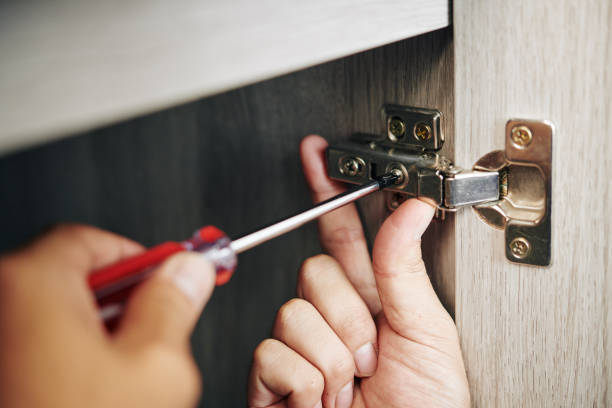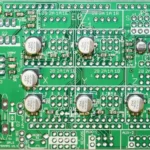Start by reviewing the intended door thickness, weight load, opening angle, and the surface finish of the cabinet and the door. Document any specific design constraints, such as concealed or exposed mounting areas, as well as finish compatibility with existing powder coating or plating options. This benchmark of functional and aesthetic parameters establishes a clear foundation for hinge selection. Once documented, you can liaise with potential hinge suppliers to confirm how well their product lines can be customised to meet these explicit technical and design demands.
Evaluate Manufacturer Capability and Customisation Options
After defining project requirements, the next step is to evaluate potential hinge manufacturers. A competent partner should provide documentation on material specifications, testing standards, and manufacturing tolerances. Key indicators of quality in high-end applications include the grade of stainless steel or brass used, the type of anti-corrosion treatment, and the fineness of surface finishes.
Investigate their ability to create bespoke components—such as lengthened arms, non-standard bore centres, or integrated damping—and how these can be integrated into existing hinge designs. Evaluate the manufacturer’s production volume flexibility to confirm they can accommodate both prototype runs and large production batches without compromising lead times. An on-site factory audit, or a virtual equivalent, can further clarify production capabilities and quality control practices.
Assess Durability and Performance Testing
Longevity and performance are non-negotiable in high-end installations. Request the hinge manufacturer to provide documented corrosion resistance performance, fatigue testing data, and impact load results. Look for testing conducted in aligned climatic conditions and for the specific finish you intend to use.
Any high-end project should also include cyclic testing that reflects the door movements expected in daily use. A reputable manufacturer will offer results showing that the hinge can endure in excess of 50,000 cycles without perceptible wear. For particularly demanding environments—such as coastal areas or high humidity installations—ask for salt mist cabinet tests and verification of mechanical properties after such exposure.
Examine Aesthetic Integration and Finishing Options
Custom cabinet hinges should blend invisibly with the cabinet design or, in certain applications, provide a deliberate aesthetic accent. Check the manufacturer’s options for concealed installations, including overlay and inset configurations, and confirm the maximum reveal tolerances that can be achieved.
For visible hinges, evaluate their design language, and review their standard and bespoke plating or coating choices. A high-end project demands finishes that match the door surface in colour and texture, whether that is natural anodised, brushed nickel, or colour-matched powder coating. A sample kit that includes real hinge samples in various finishes will help you verify adhesion quality and colour consistency under the same lighting conditions as the final installation.
Clarify Logistics and After-Sales Support
Once a manufacturer has demonstrated technical and aesthetic capabilities, clarify the logistics and support policies that are critical for high-end project timelines. Confirm their production lead times, packaging methods to prevent surface damage, and whether they can provide sequential numbering or tracking for large cabinet runs.
After delivery, the manufacturer should offer after-sales support that includes technical documentation, installation jigs where required, and a clear returns process for any spare or replacement parts. A dedicated project engineer, ideally with experience in high-end fit-outs, can provide valuable guidance through the installation phase, ensuring that any unforeseen adjustments are addressed without project delays.
By methodically following these steps, you will identify and secure a hinge manufacturer whose products enhance both the functional performance and the aesthetic integrity of the cabinetry in your next high-end project.
When you’re starting a project, keep these in mind:
- Do the doors need hinges that are fully hidden, partially visible, or fully on the outside?
- Should the doors have a quiet-soft-close or push-to-activate opening?
- How much weight will each door or drawer need to support?
- Will the hinge have to handle materials like tempered glass, composite boards, or rare hardwoods?
- Is there a tight space that demands low-profile or specially compact hinge designs?
Clarifying these details allows you to work with the hinge factory on a tailored solution that meets both performance standards and the installation environment.
Assess the Manufacturer’s Engineering Depth
Top-tier furniture hardware is as much about the unseen details as about the surface appearance. The architecture of the custom hinges must deliver precise motion, repeatable performance, and harmony with contemporary aesthetics. For that reason, it’s essential to investigate the engineering resources and quality-control procedures of your hinge source.
When evaluating potential hinge suppliers, prioritize these key areas:
- Demonstrated success in producing custom hinges for high-end aerospace or automotive interiors.
- Teams dedicated to engineering and hands-on prototype builds, stationed under one roof.
- Availability of state-of-the-art testing rigs for simulating cycle life, salt spray exposure, and load-bearing limits.
- Recognition through ISO 9001 accreditation, complete RoHS compliance, and applicable regional certificates.
- Willingness to deliver 3D CAD models, detailed engineering drawings, or digital twin interfaces at the concept stage.
Collaborating with a forward-thinking hinge vendor safeguards part reliability while accelerating your design cycle, minimizing the costly pitfalls of misalignment and difficult on-site adjustments.
Evaluate Material and Finishing Choices
For luxury cabinetry, hinge material and finish choices profoundly affect lifespan, smooth performance, and the overall brand impression. A hinge crafted from marine-grade stainless steel or a high-performance polymer can withstand steam, condensation, and daily opening forces without developing creases, stains, or play.
Here’s what you want in hinge materials:
- Stainless steel gives you strength and is resistant to rust and corrosion.
- Zinc alloy enables smooth movement and allows for cost-effective, fine-detail customization.
- Brass finishes add visual appeal and ensure a refined, fluid hinge motion.
- Anodized aluminum strikes the balance of light weight and resistance to the elements.
Beyond the base metal, finishes like chrome plating, matte black, brushed nickel, or bespoke colors can unify the piece with the rest of the furniture. Some suppliers also provide eco-conscious coatings in alignment with modern sustainability priorities.
When you’re sourcing custom cabinet hinges and hinge supplier partnerships, uncompromising material quality is a must—especially when the application is a luxury environment.
Emphasize Customization and Production Adaptability
Every upscale project presents a new puzzle. The cabinet might have a complex silhouette, the installation space could be unusually tight, or the client may ask for a hinge action unlike any you’ve used before. A supplier’s readiness to create entirely bespoke solutions is what turns these challenges into seamless results.
Top hinge manufacturers now provide:
- Tailored kinematics to achieve specific angles or unique door movements
- Custom mounting plates and fine-tuned adjustment systems
- Signature packaging and private-label labeling for exclusive brands
- Lower Minimum Order Quantities to accommodate pilot runs or niche batches
- Fast prototyping and short lead times for projects that demand immediate results
In luxury environments, timing and accuracy remain non-negotiable. Engage a hinge supplier who aligns with your precise specifications and appreciates the urgency that high-profile environments demand.
Prioritize Logistics, Warranty, and Support
Although the hinge itself is foundational, the suite of services around it often determines the strength of the B2B partnership. When project schedules tighten, a single late shipment can prolong timelines and escalate costs, leaving clients dissatisfied and your reputation on the line.
Here are some factors to weigh:
Can the manufacturer consistently meet delivery schedules while providing robust logistics support?
Are products engineered for optimal packaging to minimize shipping bulk and protect against damage?
What level of installation instructions and technical documentation accompanies each order?
Does the supplier stand behind their products with a warranty and clear return policy for defects?
Is support available after sale, whether through remote troubleshooting or on-site assistance?
These questions differentiate professional hinge makers from off-the-shelf hardware suppliers. Sophisticated projects demand an unbroken supply chain, from the factory floor straight through to the final installation.
Conclusion
Selecting the right custom cabinet hinges goes beyond functional performance—it guarantees that the end product embodies the quality and craftsmanship your brand promises. The finest hinges unify precision design, durable materials, aesthetic adaptability, and exceptional support.
By weighing your hinge supplier against their ability to customize, their material know-how, their technical assistance, and their logistics readiness, you set your business on a path to outstanding results. In a competitive environment where every part speaks for your brand, the choice of hinge partner rises beyond a simple detail—it becomes a decisive strategy.

















